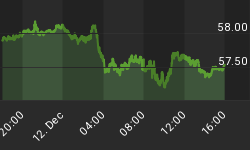Sterling collapses by over 800 points (8 cents) to $1.5260, posting its biggest intraday decline since exchange rates became freely floated in 1971, reinforced by a bigger than expected 0.5% q/q decline in UK Q3 GDP, and a 0.3% y/y rise, versus expectations of a 0.2% q/q decline and below expectations. The admission of a recession by the Bank of England as well as the indication that inflation has fallen "considerably" opens the door for the much anticipated decline in high UK interest rates, thereby, accelerating sterling's declines.
EUR's decline vs USD extends to $1.25 but is not as pronounced as GBP selling, hence the prolonged spike in EURGBP to a 2-month high of 81.00 pence from Wednesday's 77.5 pence.
Capital Flight into the Yen is the Path of Least Resistance, as the currency highlights its outperformance across the board, damaging the dollar by 7 yen a 13-year low of 91.10 yen. US Treasuries are also rallying at their strongest in 13 years. European markets drop by over 10%. Such historical market moves are the only the result of imploding hedge funds leading to massive liquidations. Major interventions from authorities must be expected at start of trading on US Friday trading. Central bank rate cuts are not ruled out today.
The monthly USDJPY chart below shows that cyclical lows have been reached at 5-year intervals (April 1995 at 79.70, January 2000 at 101.25 and 101.65 at January 2005), with each of these lows coinciding with interest rate hikes by the Federal Reserve. This supports our hypothesis - first presented in March 18, 2008 - that the next Fed hike will not take place until 2010, thus, coinciding with the expected low in USDJPY. It is also in line with our firm position against prevailing market expectations last summer for a Fed rate hike this fall. This suggests that further selling remains ahead into the next 10-12 months, with declines outstripping the gains, especially as the bear market in equities is expected to prolong into its average duration of 2-3 years. This makes 79-80 yen our projected low for 2010.

The Swiss franc attempts to join the yen as a safe haven low yielder, dragging USD from over 1.17 to 1.15. One reason CHF has not fulfilled its role of rallying during recent bouts of rising risk aversion is fears about Switzerland 's overall exposure to Continental Europe's banking crisis/recession. Note how EURCHF plunges to 7-year low at 1.44, reflecting Franc strength. But we still expect USDCHF attempting 1.1950-1.20 over next 2 weeks.
Gold's slumps to 14-month lows at $696 per ounce as commodity currencies are crushed by the unwinding in high yielding currencies. Unlike in mid September when gold rallied by over $100 on the collapse of Lehman Brothers, the current market meltdown is a result of a global recession/slowdown and not a US-specific issue problem. This is further fuelling the dollar against non-JPY currencies on unwinding, moves to cash from emerging market paper. Any news reporting of an implosion of a US-based hedge fund or further troubles in US banks is expected to support gold at the expense of the dollar.
For more detailed analysis on how to read the USDJPY cycles in anticipating Federal Reserve interest rate shifts, visit Chapters 6 and 9 of my book.
















